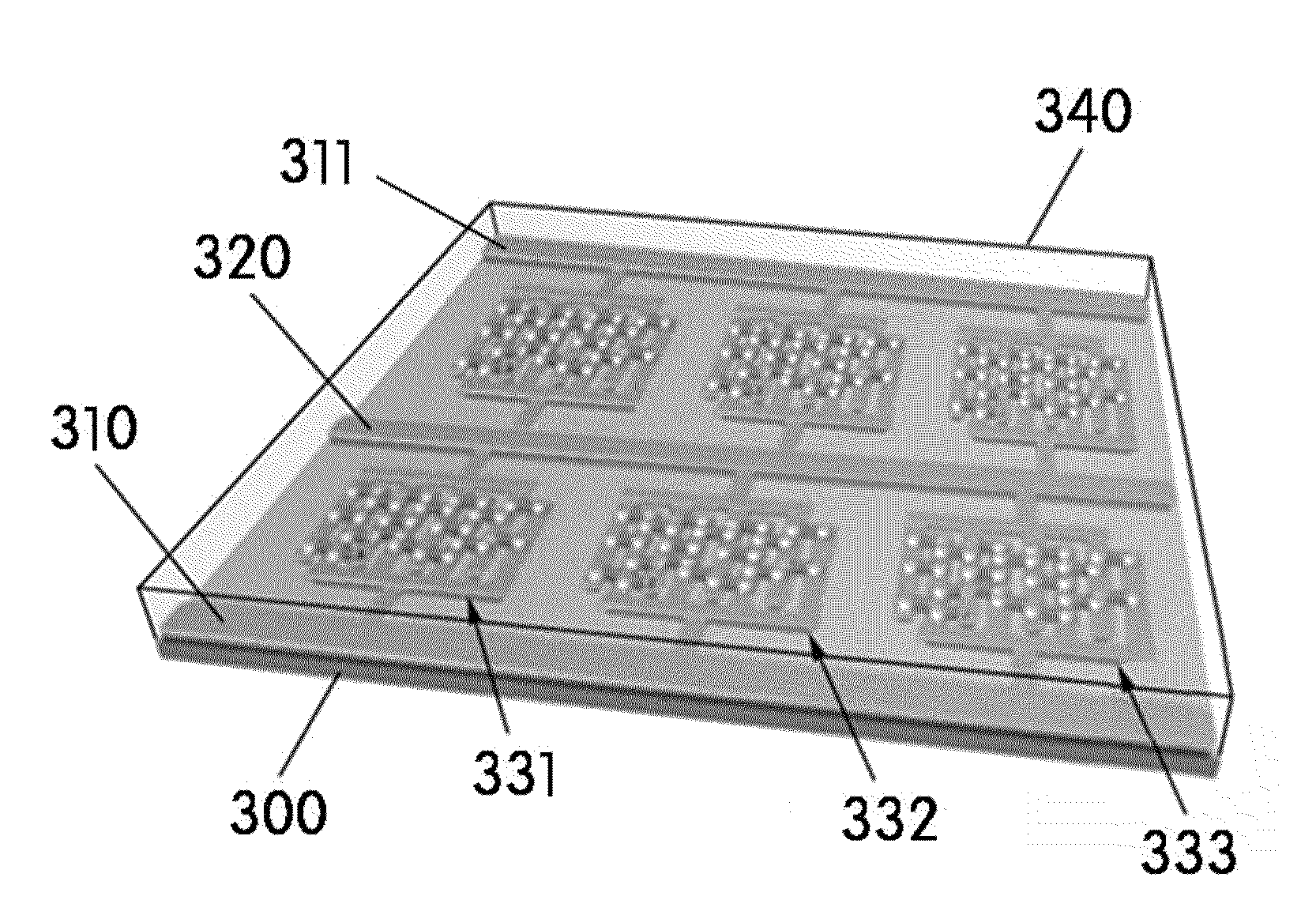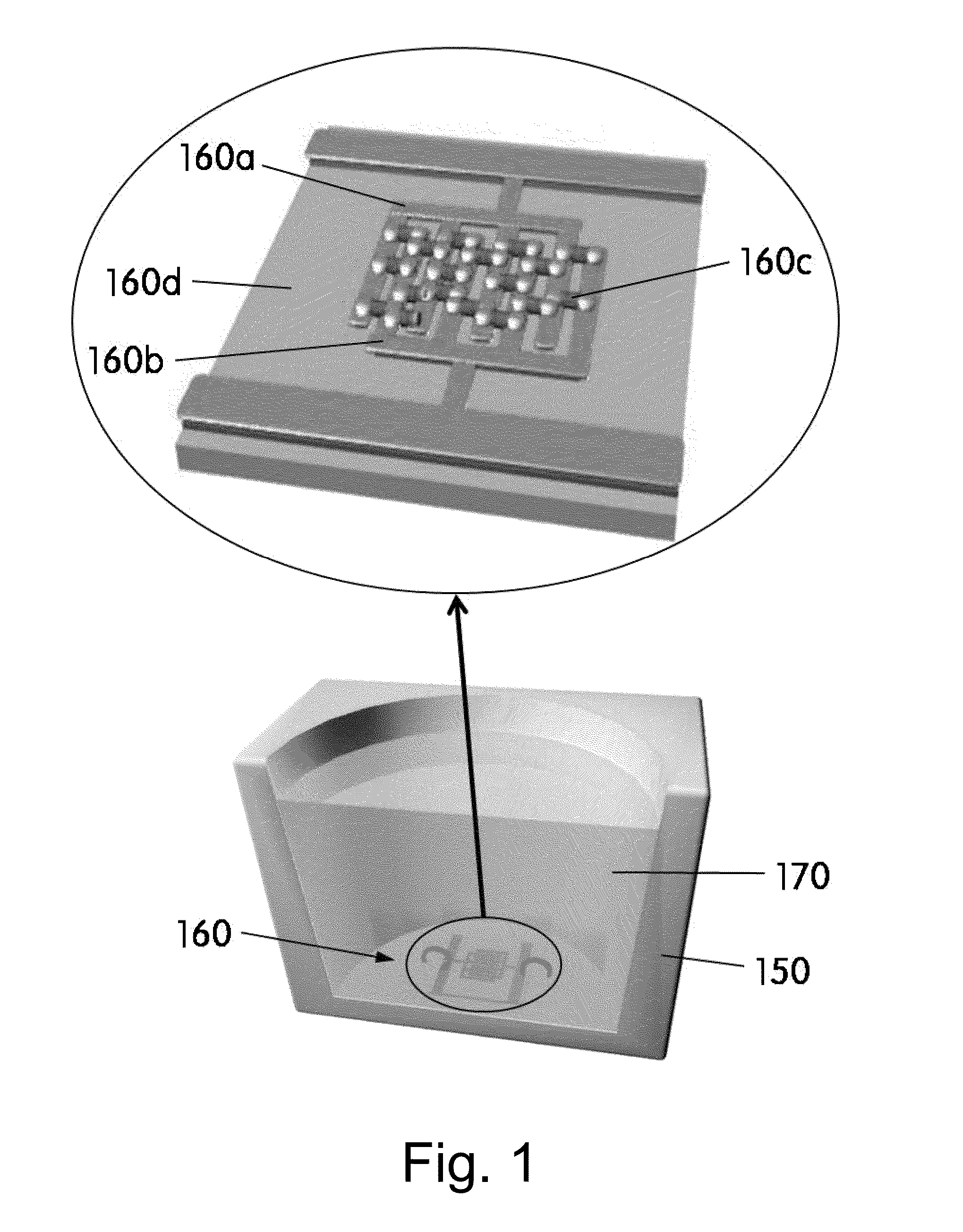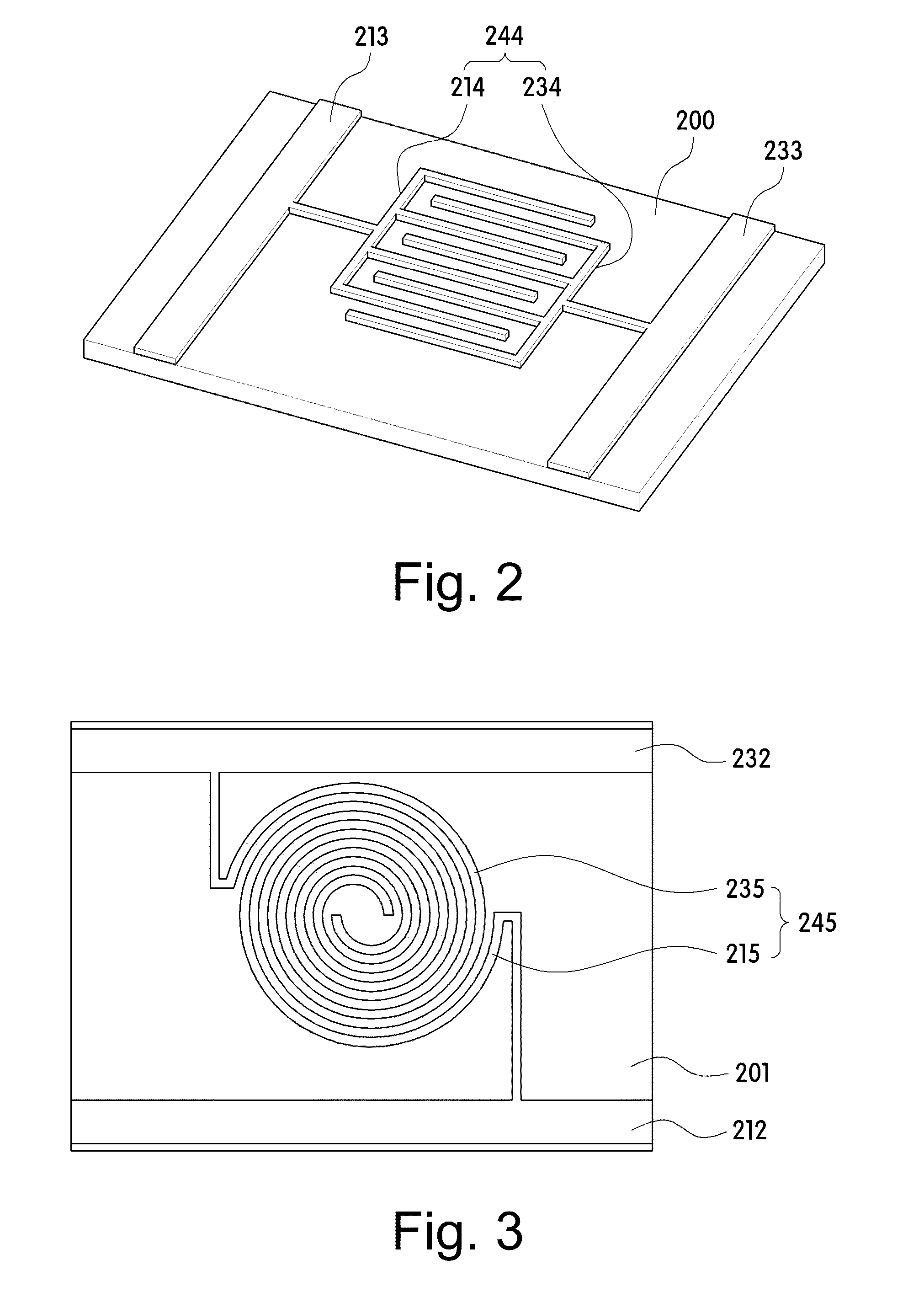LED lamp using ultra-small LED electrode assembly
- Summary
- Abstract
- Description
- Claims
- Application Information
AI Technical Summary
Benefits of technology
Problems solved by technology
Method used
Image
Examples
example 1
[0218]An electrode line as illustrated in FIG. 3 was manufactured on a base substrate formed of quartz and having a thickness of about 800 μm. Here, in the electrode line, a first electrode has a width of about 3 μm, a second electrode has a width of about 3 μm, a distance between the first electrode and the second electrode is about 2 μm, and each of the electrodes has a thickness of about 0.2 μm. Also, each of the first and second electrodes is formed of a titanium / gold material, and an electrode line region on which the nano-scale LED device has an area of about 4.2×107 μm2. Thereafter, an insulation barrier as illustrated \in FIG. 13 was formed on the base substrate. The insulation barrier was formed of silicon dioxide, and a height from the base substrate to an end of the insulation barrier is about 0.1 μm. Here, the insulation barrier was formed on the base substrate except for the region (area of 4.2×107 μm2) in which the nano-scale LED device is mounted on the electrode line...
example 2
[0222]Although the same process as Example 1 is performed, the insulation barrier was not formed, and nano-scale LED devices dropped onto an electrode line formed on a base substrate which does not include the insulation barrier to manufacture a nano-scale LED electrode assembly and then manufacture an LED lamp using the nano-scale LED electrode assembly.
example 3
[0223]Although the same process as Example 1 is performed, nano-scale LED devices were injected to an electrode line region, instead that the solution containing the nano-scale LED devices drops to the electrode line region surrounded by the insulation barrier on the base substrate. Then, acetone was injected to the region on which the nano-scale LED devices are injected. Here, the injected acetone has about 10,000 weight parts with respect to 100 weight parts of the nano-scale LED devices. While the solvent is injected, AC power having a voltage of VAC=30 V and a frequency of about 950 kHz was applied to the electrode line for one minute to manufacture the nano-scale LED electrode assembly and then manufacture an LED lamp using the nano-scale LED electrode assembly.
PUM
 Login to View More
Login to View More Abstract
Description
Claims
Application Information
 Login to View More
Login to View More - R&D
- Intellectual Property
- Life Sciences
- Materials
- Tech Scout
- Unparalleled Data Quality
- Higher Quality Content
- 60% Fewer Hallucinations
Browse by: Latest US Patents, China's latest patents, Technical Efficacy Thesaurus, Application Domain, Technology Topic, Popular Technical Reports.
© 2025 PatSnap. All rights reserved.Legal|Privacy policy|Modern Slavery Act Transparency Statement|Sitemap|About US| Contact US: help@patsnap.com



